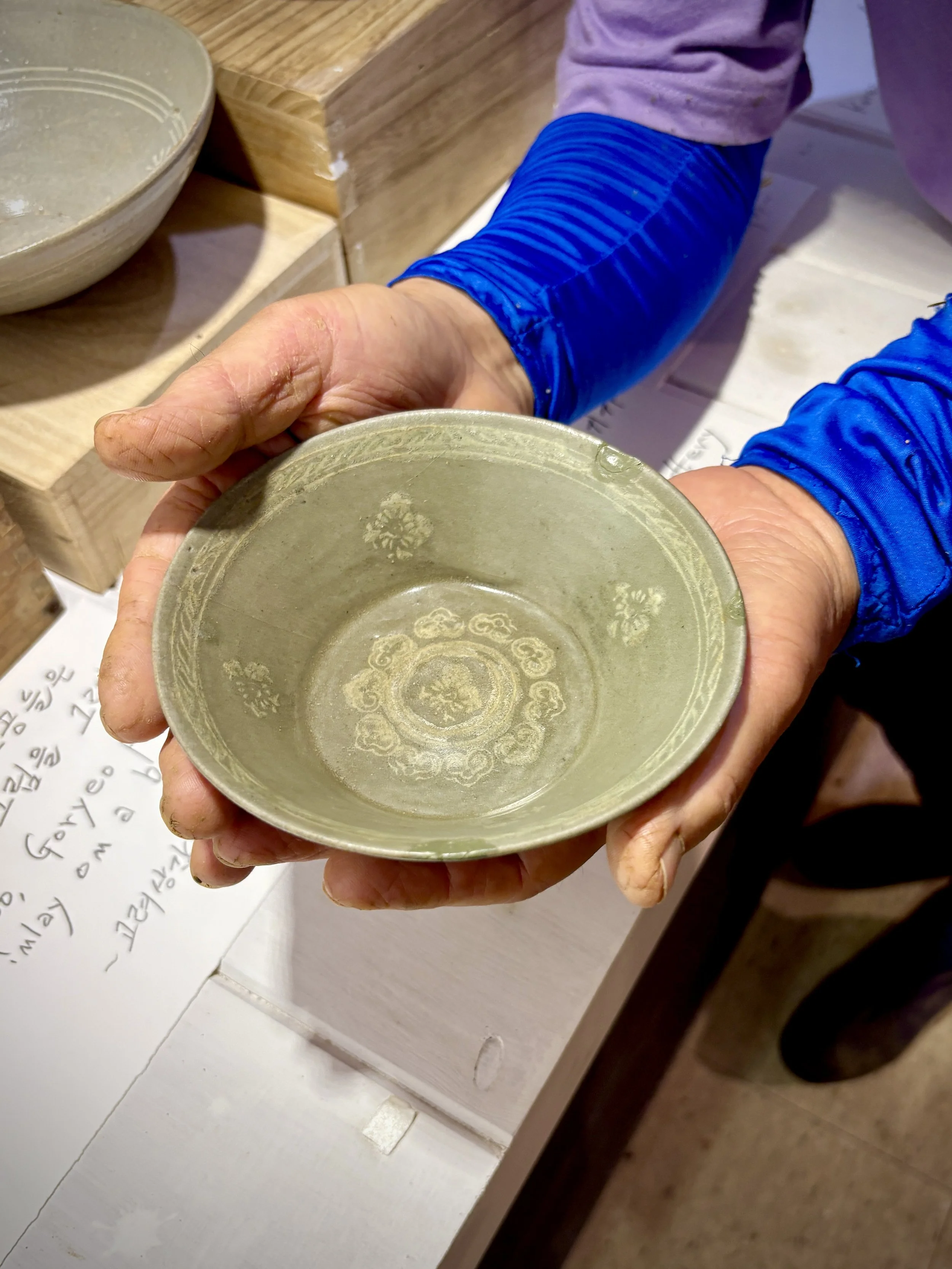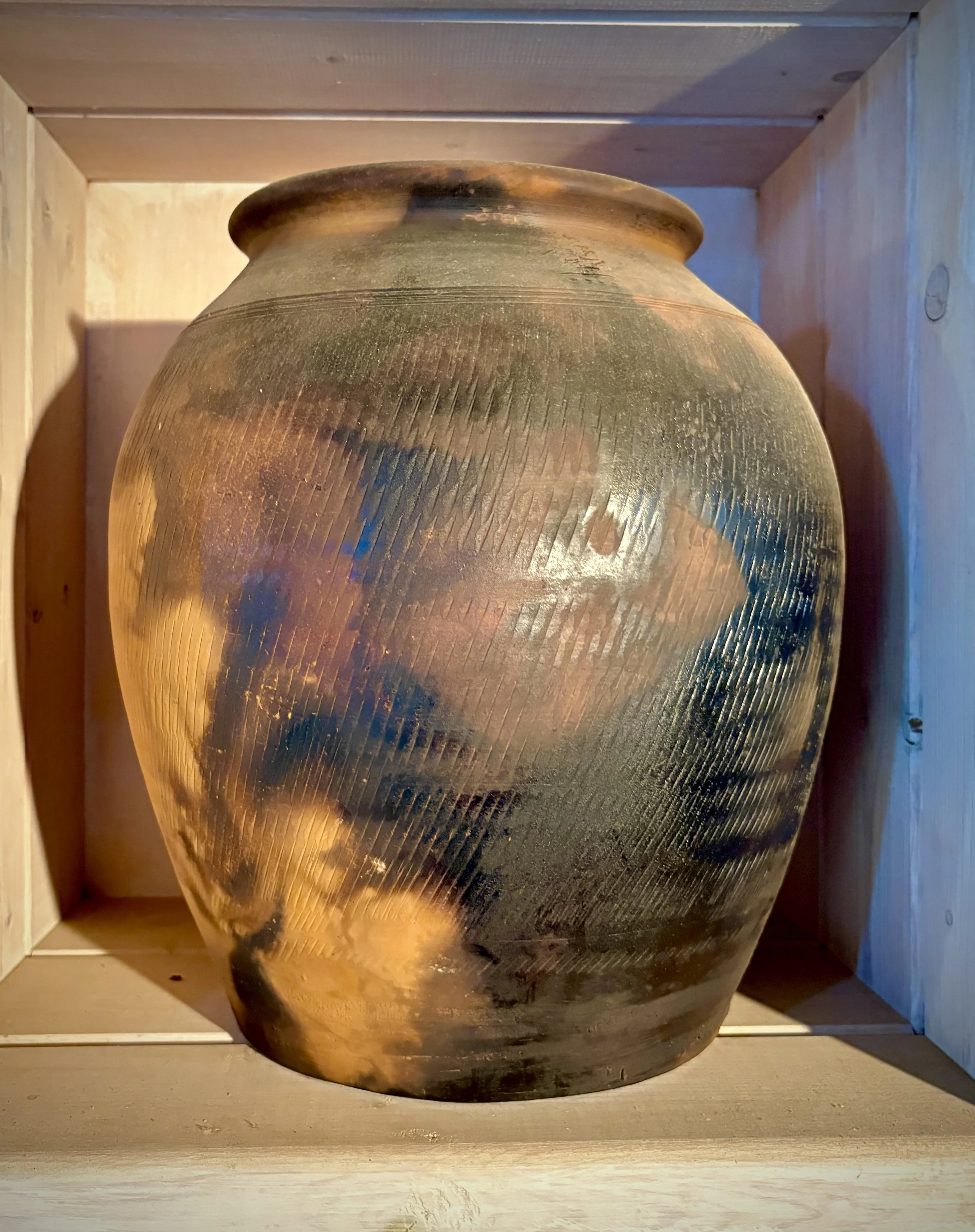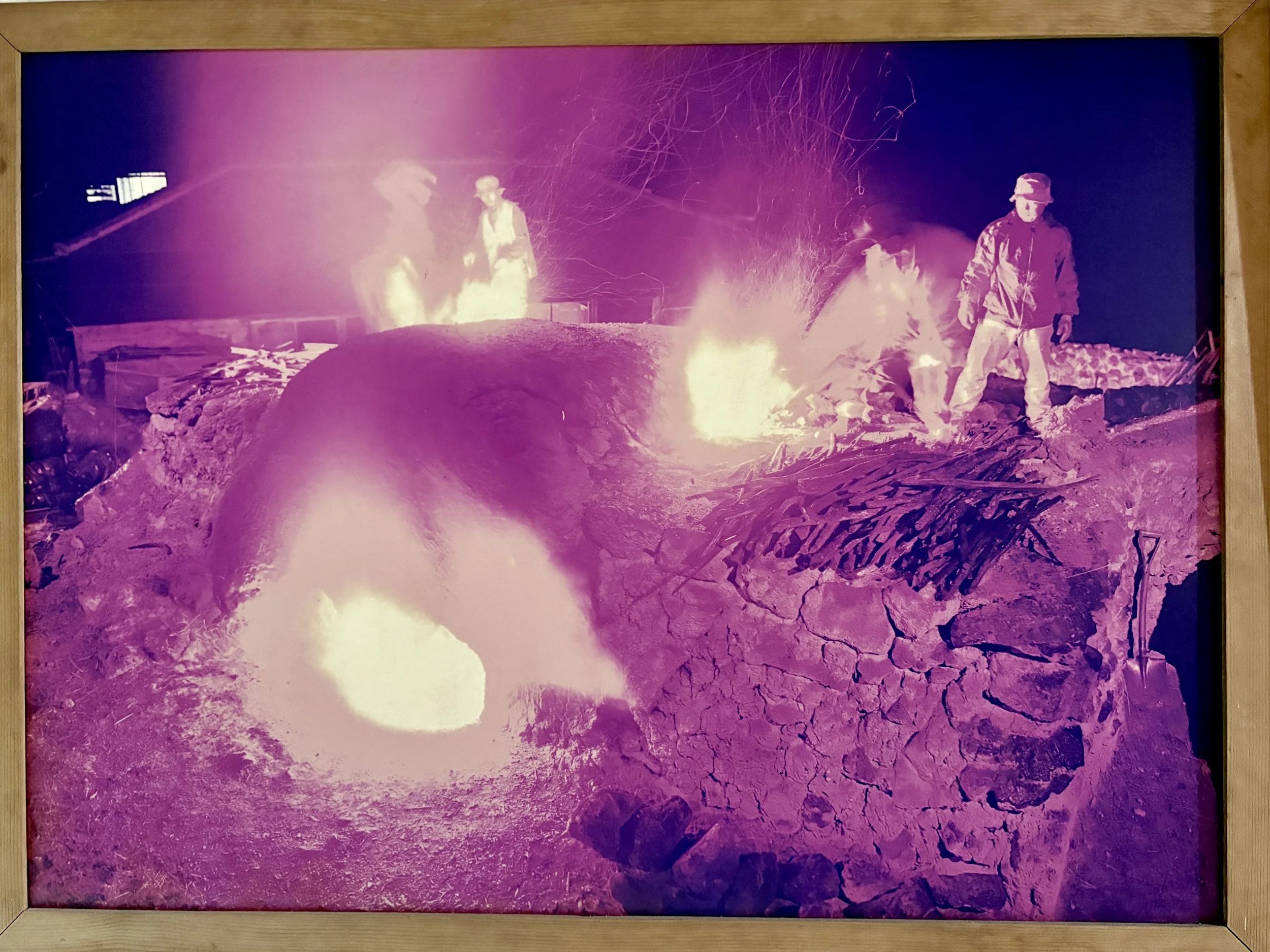Jeju S.Korea Ceramic Center
Not directly bonsai pottery related, but appreciating wood fired, traditional techniques. A wonderful educational interaction with the elder artists—so gracious. Thank you, Kang Chang-eon.
“Another distinguishing feature of Jeju onggi is that they are not glazed, mainly because they are made with volcanic ash soil instead of the white or red clay commonly used on the mainland. This method was devised by the islanders who lived in an environment where soil suitable for pottery production was rare. Volcanic ash soil contains many minerals, which melt and ooze to the surface during the firing process, producing the effect of a glossy coating. In addition, unlike in other regions where wood from tree trunks is used to heat the kiln, branches dried in the shade are used as fuel.”
“Pottery kilns are called gul in Jeju, which means “cave” in Korean. The semi-cylindrical ceiling, so shaped due to the natural contour of the land, gives the kilns the appearance of a cave. There are two types of kilns: yellow kilns and black kilns, so named because the pots fired in them exhibit yellow and black hues, respectively. The color difference comes from differences in firing temperatures.”
















